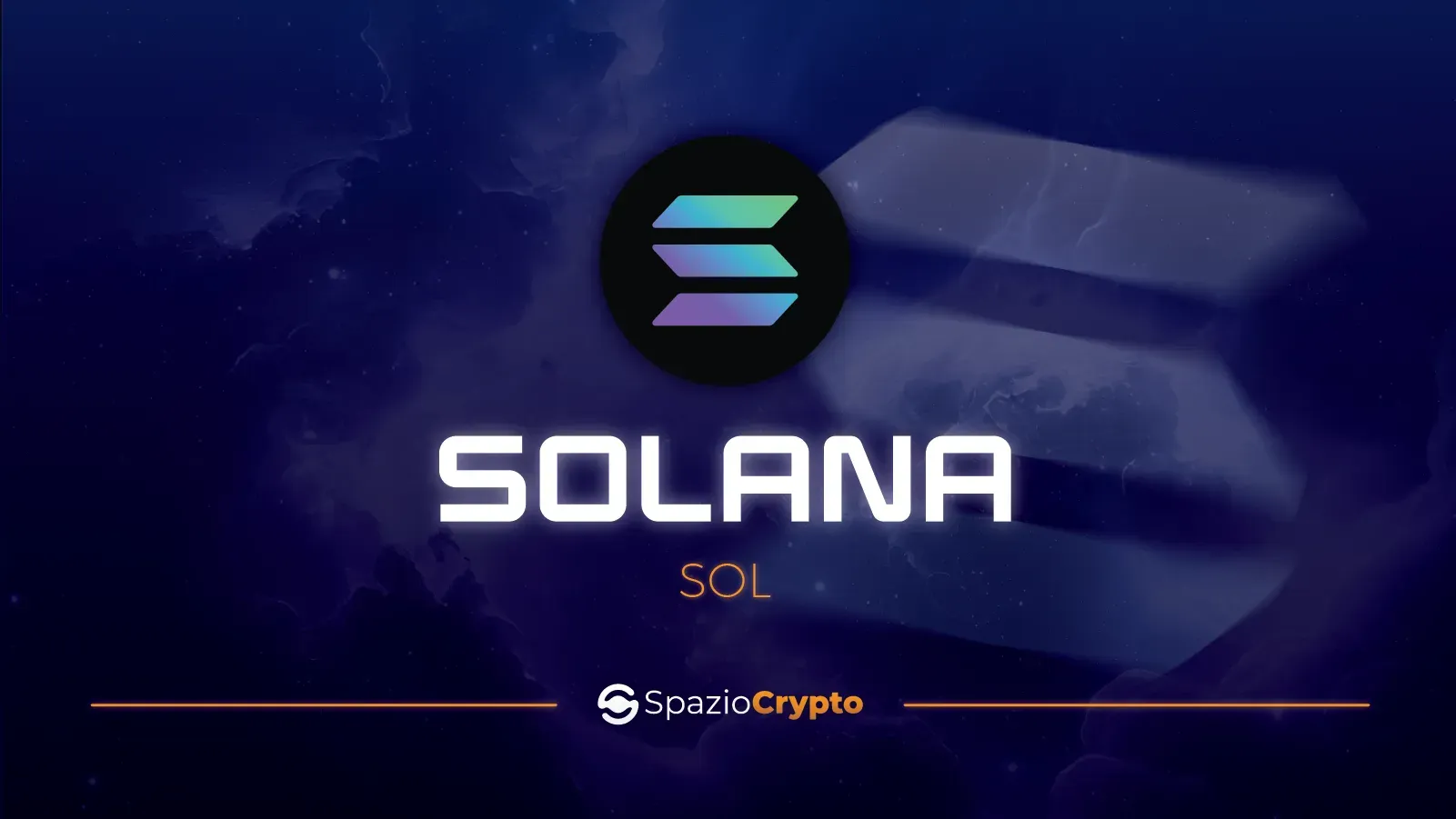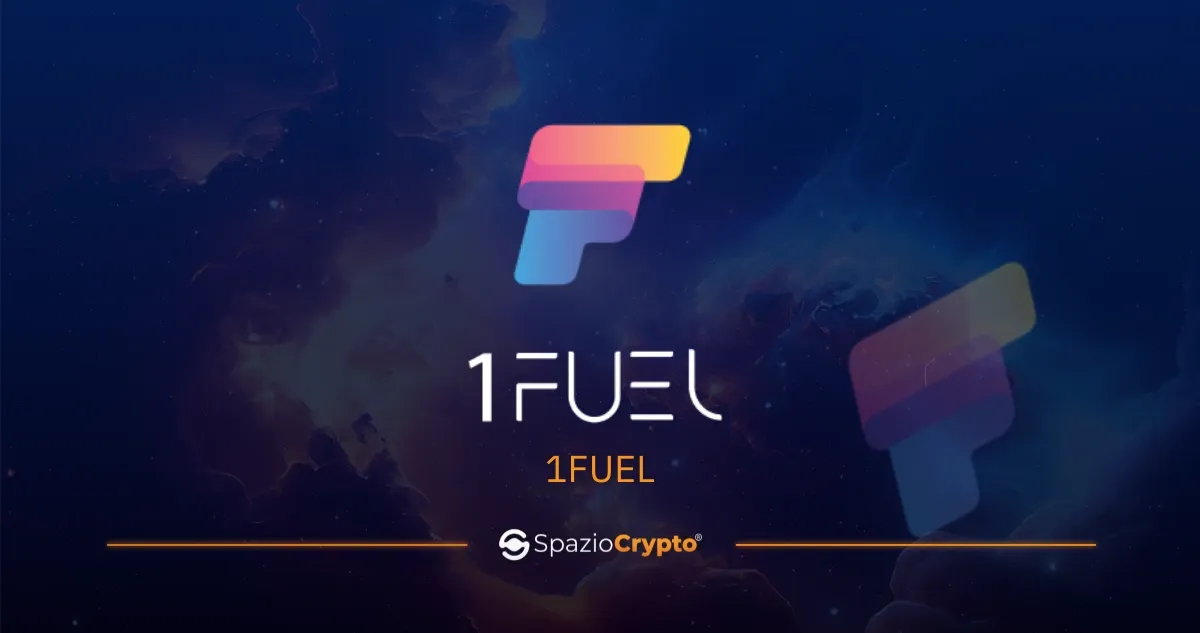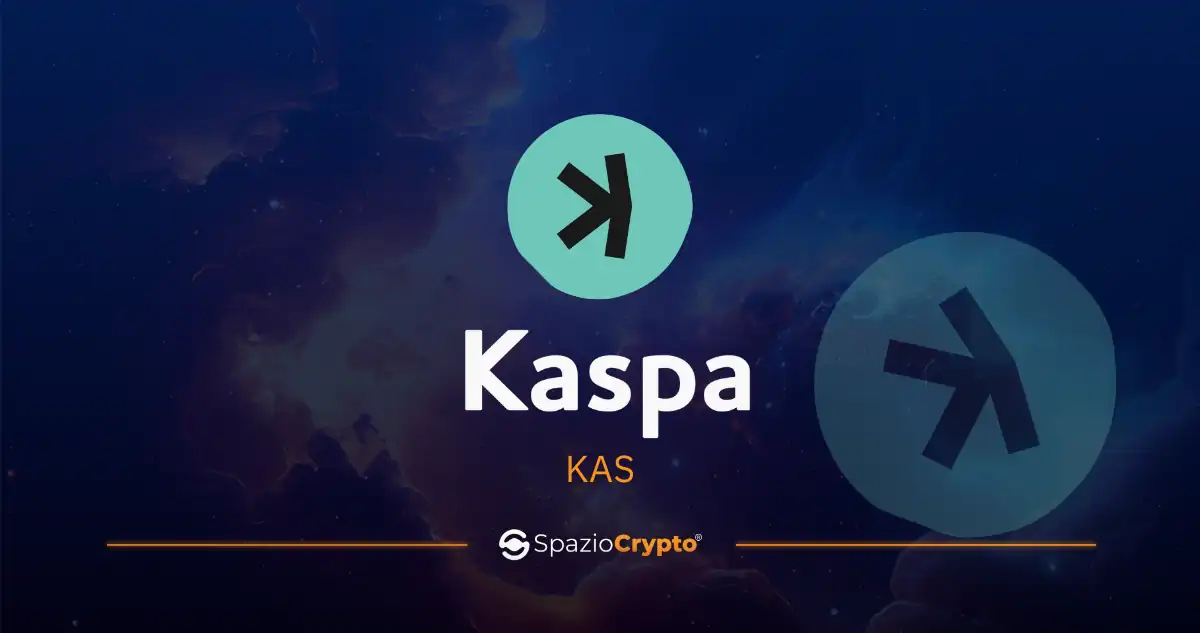Innovation in blockchain technology has reached new heights with the emerging and promising blockchain Solana. Conceived by Anatoly Yakovenko in 2017, thanks to a team of talented developers, Solana has quickly gained notoriety in the cryptocurrency ecosystem for its speed. In this article from SpazioCrypto's Crypto Guide, we will guide you to understand the basics of Solana's blockchain, introducing concepts, dynamics, and technicalities that are worth delving into through official channels and sources.
The Solana Blockchain (SOL): Speed and Innovation
The blockchain Solana is primarily led by Solana Labs, but is also supported by the Solana Foundation, a Swiss-based non-profit organisation dedicated to community growth and development funding.
It was officially launched in March 2020, and from the outset, numerous DeFi and especially NFT projects leveraging its technology quickly established themselves in the market, giving rise to a cohesive and devoted community of users, collectors and developers.
The SOL Token: Utility and Features
From a tokenomics perspective, the cryptocurrency SOL shares some similarities with Ethereum. The maximum supply is unlimited and 50% of the transaction fees are burnt, while the other 50% is distributed to validators. This feature opens up the possibility that, with increasing adoption of the chain, SOL could become deflationary.
To regulate inflation, Solana has set an inflation rate of 8% during the first year, with a 15% drop each year until the inflation rate reaches 1.5%. The target will be reached about 10 years after the launch of the chain.
It should be noted that, due to the actual timing of the blocks and past disruptions in their production, the actual inflation rate is lower than expected, being about 30% lower than expected. The above data is based on a standard block time of 400 milliseconds, but the actual average block time on Solana is around 650 milliseconds. This discrepancy directly affects the dynamics of inflation. For the same reason, it cannot be estimated precisely when the inflation rate will reach its target of 1.5%.
With a longer actual block production time, there will be fewer blocks generated in a year than expected. This has a significant impact on the issuance of SOL cryptocurrency, as these are issued with each block. Fewer blocks generated in a year result in fewer SOL rewards per block, which in turn reduces the overall inflation rate, but on the other hand, reduces the validators' revenue. Each year, the new tokens issued will be distributed 95% to validators, the remaining 5% is reserved for the Solana Foundation treasury. As mentioned above, validators also receive 50 per cent of the transaction fees paid by users.
The Technology Guarantor of Scalability
Technologically, Solana adopts a monolithic structure, the entire blockchain is based on a single chain. There are no shards to increase scalability, and this contributes to improved security by guaranteeing one of the highest Nakamoto coefficients, which stands at 29, and a fleet of 1942 validators. Scalability, on the other hand, is ensured by a series of innovative technologies that we will analyse superficially in the course of the reading.
TDMA Protocol and Proof of History
A particular element of the Solana blockchain is the adoption of the TDMA protocol, which is commonly used in telecommunications to manage communication between large numbers of people in an orderly and fast manner. 'TDMA' stands for 'Time Division Multiple Access', and is a method that allows different devices to share the same communication channel in shifts. By combining TDMA with the Proof of History, Solana becomes a fast, secure and immutable blockchain. It is important to note that the Proof of History is not the validation system itself, but acts as a system that keeps the transactions and blocks created on the chain in order. The PoH allows the concept of time to be introduced into the proof of stake, creating a history of events, proving that they occurred at a specific time without having to query other validators.
How Does Delegated Proof of Stake Work for Validators?
Solana, like many modern blockchains, adopts the Proof of Stake validation system with delegation. Being an extremely fast blockchain, Solana requires significant hardware resources from its validators, but on the other hand compensates by requiring a small amount of crypto SOLs to start up. Just the amount needed to cover the costs and fees for communicating with other validators during the consensus process will be sufficient.
Typically, the chain charges about 1.1 SOL per day for communication and 0.02 SOL for contract rental. Thus, although SOLs are not required to start the validation business, the daily fee represents an important barrier to entry for all those potential small validators who do not have enough SOLs to cover their daily expenses through inflation and transaction fees. The foundation, however, promotes the growth of the validator set through the Solana Delegation Programme, which offers incentives to those small validators that perform certain 'tasks'.
A peculiarity of Solana is that consensus messages between validators are sent directly on-chain. This is interesting in order to ensure total transparency but also control over the activity of validators.
Key Technologies of the Solana Blockchain
The Solana blockchain offers a numerous set of peculiar technologies that make it one of the most performing and promising blockchains. According to Anatoly Yakovenko, the key technologies that make Solana a blockchain capable of reaching and 50.000 TPS are 8, which will be listed and described here simply, without delving into the technical:
- Proof of History (POH) - a clock as well as a consensus system;
- Tower BFT - a PoH-optimised version of PBFT;
- Turbines - defines how transaction validating nodes send and receive blocks;
- Gulf Stream - Mempool-free transaction forwarding protocol;
- Sealevel - Parallel runtime for smart contracts;
- Pipelining - A transaction processing unit for validation optimisation;
- Cloudbreak - Horizontally scaled account database;
- Replicators - Distributed log repository.
For the more curious, all technologies are described in detail in the Solana's Blog.
Solana's Frequent Alt
The main criticism levelled at Solana's blockchain is that it has suffered numerous interruptions in blockchain production. Currently, there is still no automatic slashing mechanism in place. Therefore, if and when something strange occurs on the blockchain, it is interrupted in order to understand what has happened and possibly decide manually who should be slashed.
However, to be honest, Solana has crashed many times but never because of bad actions on the part of the validators, rather because of a huge amount of spam from the bots, which were sending millions of transactions per second (the average is 4,000 TPS). This excessive workload demanded of validators was evidently too heavy, exhausting their memory and stopping block creation.
What are the Proposed Solutions?
Many updates have been proposed and implemented to address these problems. Recent updates include improvements in the memory usage of validators, 'priority fees' have been introduced in order to execute transactions offering more crypto in SOL to validators first. Currently, about 42% of transactions contain an additional fee. Further updates concern the implementation of the QUIC protocol, a communication protocol created by Google, the QoS (Quality of Service) stake weighted and the increase of the size of individual transactions, in order to increase the information within a single transaction and avoid burdening the network with multiple transactions.
Another interesting and unique feature being developed on Solana is 'local fees'. This feature will ensure that each type of smart contract has its own 'fees market', so if one type of contract is used more than the others, that usage will not affect the entire chain. For example, during a massive mint of NFT on Solana, those who want to interact with the mint's smart contract will have to pay higher fees, but the few people who are performing different transactions, such as decentralised finance transactions or simple USDC transfers, are not affected and do not have to pay higher fees because the smart contract they need is not congested. This is a very interesting feature that helps to ensure that the intensive use of a particular type of smart contract does not adversely affect the entire network, allowing different types of transactions to coexist in a more efficient and personalised way.
Despite the great popularity of the chain, DeFi is not widely developed. Most of the LTV is located at liquid staking services, such as Marinade, Lido (which stopped offering its service on Solana a few months ago) and Jito. Activities are more concentrated on the NFT market, which has higher volumes than most blockchains. In this area, a completely unique technology has developed.
One innovation in recent months, introduced in April 2023, is compressed NFTs (cNFTs), which reduce the costs of creating and managing a large number of NFTs through the use of Merkle Trees and the saving of off-chain metadata that will be consulted by Solana's RPC providers when needed. This innovative technology has, in part, contributed to the development of applications and collections, fostering on-chain activity even of the darkest bear market periods.
Solana Blockchain: Towards Layer 2 Solutions
The future of the Solana ecosystem and blockchain seems to be projected towards the development of Layer 2 solutions and increasing compatibility with the world of Ethereum. In this context, initiatives such as Neon and Eclipse emerge.
Neon is a Layer 2 solution compatible with the Ethereum Virtual Machine (EVM). It aims to simplify the experience of Ethereum developers who wish to work on Solana. Neon allows them to run EVM-compatible applications on Solana, avoiding the need to make significant changes to the code.
Eclipse, on the other hand, is an Ethereum Layer 2 that is based on the Solana Virtual Machine (SVM), enabling scalability and faster transactions, while maintaining the compatibility and security of Ethereum.
In addition, Solana is investing in programming languages such as Solang and Move. Solang is a compiler that translates the Rust language into Solana bytecode, facilitating the development of smart contracts for developers familiar with Rust. On the other hand, Move is a new smart contracts language designed to offer more power than existing languages, paving the way for more advanced and secure DApps on the Solana network. All this, without losing sight of the AI sector, which is being supported through continuous subsidies by fostering its development on the blockchain.
Conclusions on Solana (SOL): Resilience, Innovation, Speed
Although there are still some concerns related to the collapse of Alameda and FTX, which however, thanks to the vesting of their tokens, do not seem to cause concern among investors, the evolutions of the Solana blockchain are unstoppable. The developers keep trying to introduce new and useful innovations, constantly proving that they keep their promises. A 100 per cent uptime in 2023 thanks to the introduction of priority fees and fee markets, compressed NFTs, the adoption of EVM and the emergence of AI, and partnerships with corporate giants such as Visa and Shopify make Solana among the most innovative and promising blockchains.
We hope our guide has assisted you in gaining an in-depth understanding of how Solana's blockchain works and its applications. At Spaziocrypto, we are proactively committed to providing high quality, unbiased and free information and education, and we invite you to join our crypto Italian Discord community!








